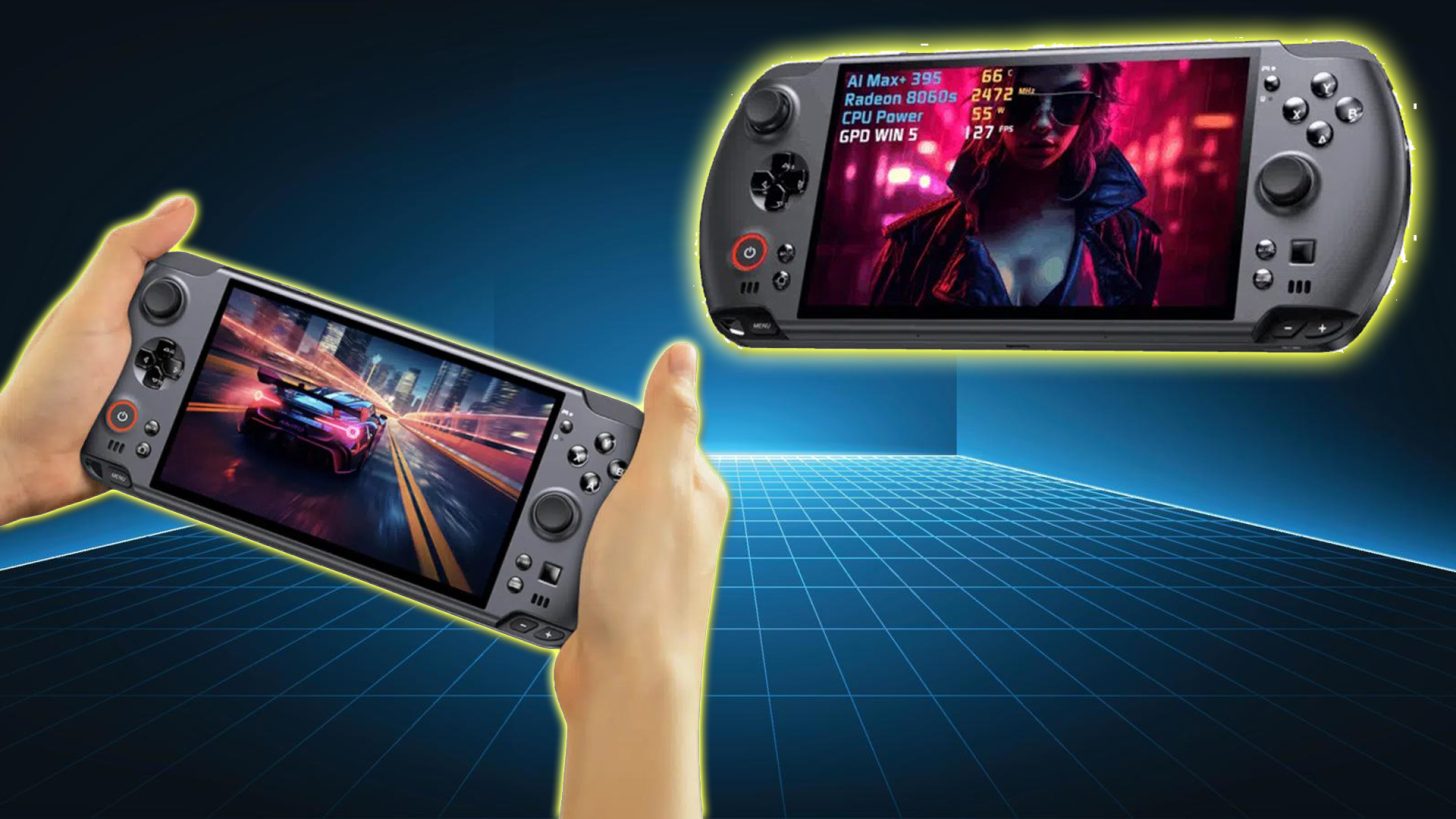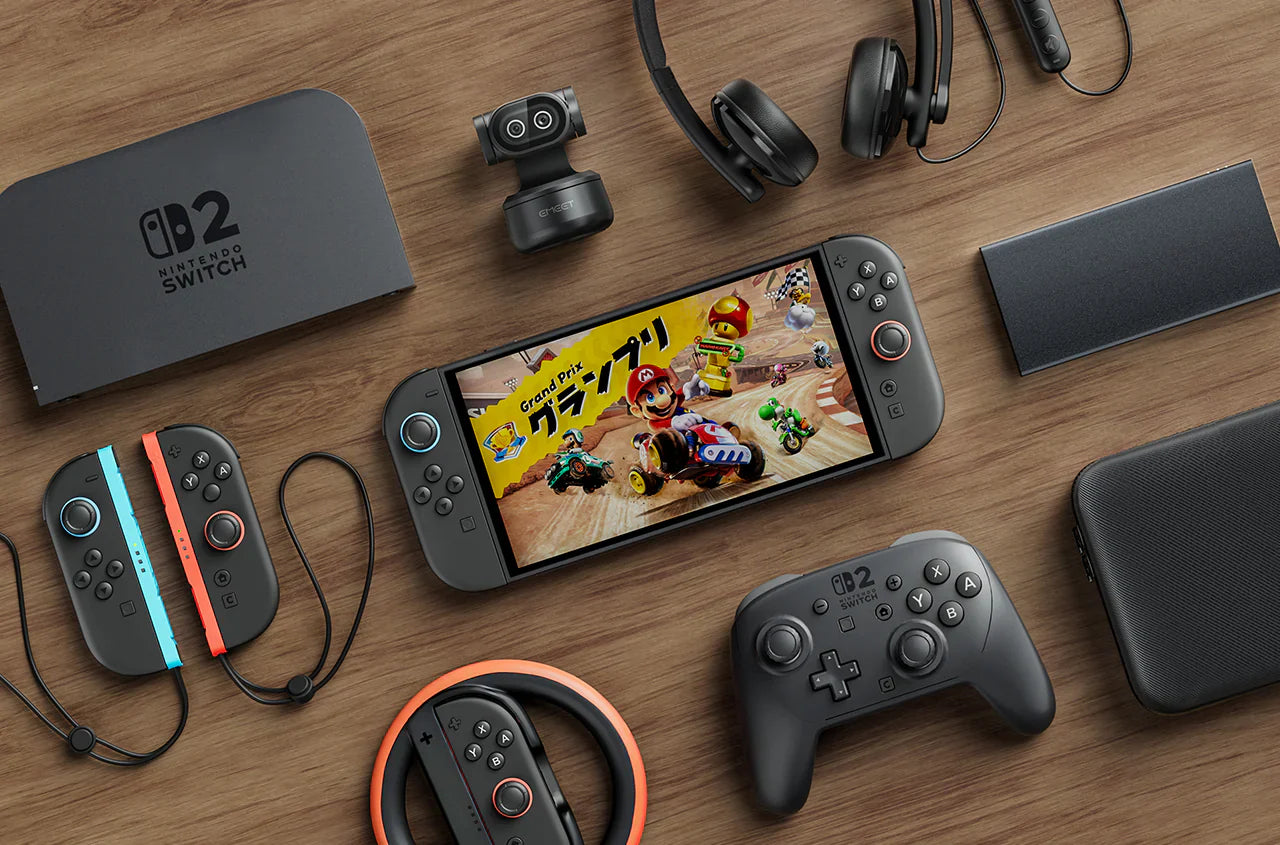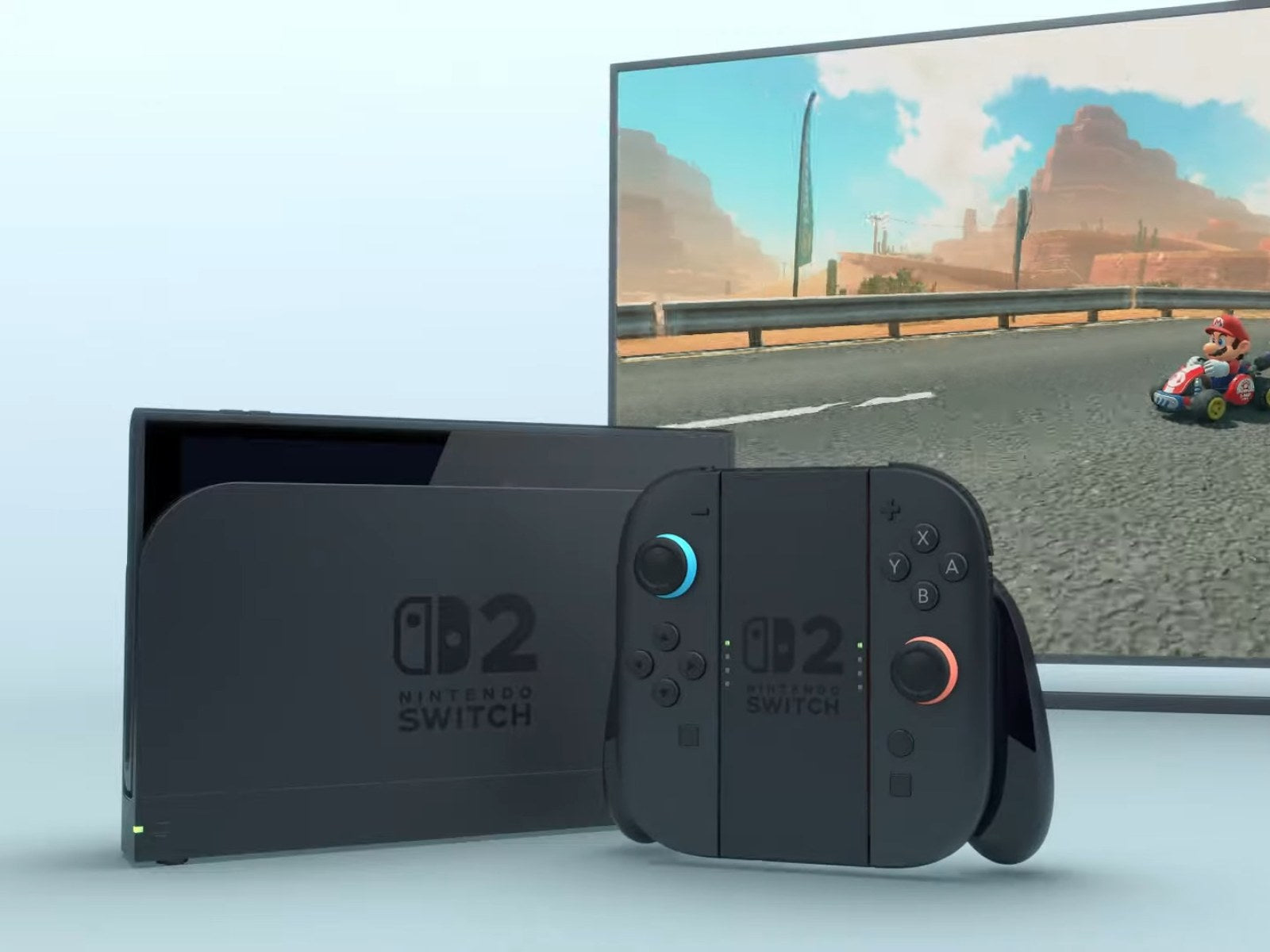The GPD Win 5 is currently on pre-order with an estimated release date of October 17th, 2025. While GPD has been coy about official pricing, industry estimates put the device between $1,800-$2,300 depending on configuration. It’s a steep price, though one that reflects the power of the AMD Ryzen AI Max 395 processor inside.
Unveiled mid-2025, this new Windows handheld made waves by claiming RTX 4060 laptop-equivalent performance in a seven-inch handheld. The Win 5 ditches the usual handheld compromises for a "desktop replacement in your backpack" philosophy.
What follows is our deep dive into the specs, features, and inevitable trade-offs that come with shoving this much silicon into something you can theoretically game with on a bus. So, without any further ado, let’s see what GPD brings to the table this time.
|
Feature |
What You Get |
|
Processor |
AMD “Strix Halo” chip – 16-core CPU with built-in Radeon graphics |
|
Graphics |
Radeon 8060S |
|
Memory (RAM) |
Up to 128 GB (8000 MT/s) |
|
Storage |
1 TB to 4 TB SSD + a new slot for swapping extra SSDs like game cartridges + microSD card support |
|
Display |
7-inch screen, 1080p resolution, 120 Hz refresh rate |
|
Controls |
Hall-effect joysticks, proper triggers, D-pad, and buttons; no built-in keyboard |
|
Connections |
USB-C (with USB4 support), USB-A, headphone jack, Wi-Fi 6E, Bluetooth 5.3 |
|
Power |
Detachable 80 Wh battery + 180W charger |
|
Weight |
~550 g without the battery, ~900 g with |
Unveiling the GPD Win 5 at ChinaJoy 2025
GPD showed off the Win 5 for the first time at ChinaJoy 2025 in Shanghai, one of the biggest gaming expos in Asia. Instead of a polished presentation, they let visitors test the device directly. Gameplay sessions, thermal checks, and even off-the-cuff footage quickly spread online.
The first impressions were a mix of excitement over the Strix Halo APU and surprise at the design, since the Win 5 lacks a built-in battery and relies on 80Wh battery packs. Still, that didn’t cool the hype.
GPD has built its reputation on squeezing serious hardware into small frames, and the Win 5 looked like its most ambitious attempt yet. By August, the handheld was already up on GPD’s official site, described as the “most powerful handheld gaming PC on the market.”
GPD Win 5 Performance: How It Compares to RTX 4060 Laptops
At the core of the GPD Win 5 is AMD’s Ryzen AI Max 395 “Strix Halo,” a chip built like no other in a handheld. It combines a 16-core/32-thread Zen 5 CPU with a Radeon 8060S GPU based on RDNA 3.5. On paper, that’s already leagues beyond what we’ve seen in this category. In practice, it edges close to a GeForce RTX 4060 laptop GPU, which is remarkable for a seven-inch device.
Early benchmarks confirm it. The Radeon 8060S pulls about 9,680 points in 3DMark Time Spy (Graphics), trailing a typical RTX 4060 laptop by only 15%. That margin is slim enough that, under less restrictive power settings, the Win 5’s GPU can almost match it frame for frame.
In a demo of Black Myth: Wukong, one of the most demanding new titles, the handheld broke 80 FPS at 1080p high settings. That being said, the trade-off here is drawing around 110W and running hot, which is a reminder that this much horsepower doesn’t come free. Still, the fact that a handheld can drive those numbers is a milestone.
The CPU side is just as impressive. With 30,495 points in Cinebench R23, the Win 5’s Zen 5 cores outperform many gaming laptops, which makes it more than a gaming handheld. It’s powerful enough to handle heavy multitasking and streaming, and since it runs Windows 11, you can even install full editing suites like Premiere or DaVinci to cut videos on the go.
GPD Win 5 Battery Setup: External Pack Trade-offs
GPD’s newest model ditches the standard built-in battery and instead uses a detachable 80 Wh pack that clips onto the back.
This design is a little unorthodox for a handheld but absolutely necessary: the Strix Halo APU can pull over 100W, far more than a typical internal battery or USB-C power bank could safely handle. Moving the battery outside frees up room for cooling and lets the device draw desktop-class power when plugged in.
Usage-wise you have two modes: attach the battery for gaming on the go, or remove it and run straight off the included 180W wall charger for maximum performance. The pack lasts roughly an hour under heavy load, and users can carry spares or even run it “backpack-style” with a cable to lighten the handheld itself.
The inevitable trade-off here is weight and bulk. With the pack attached, the Win 5 climbs to nearly 1 kg and loses some of the grab-and-go ease of competitors like the Steam Deck. It’s a bold solution and hardcore gamers will appreciate the power headroom, but casual players may find the extra hassle less appealing.
GPD Win 5 cooling system
Pushing a 70+ watt APU inside a handheld inevitably leads to serious heat, and GPD has given the Win 5 an advanced cooling setup to cope.
The Frostwind cooling architecture in the GPD Win 5 includes dual high-speed turbo fans (blower-style) and four copper heat pipes, arranged to draw heat away from the APU and out of the device as efficiently as possible. GPD claims this cooling system can handle up to 120 W of thermal load in bursts, which aligns with the Win 5’s expected maximum power draw when both CPU and GPU are fully stressed.
In the real world, thermals remain a challenge. Early testing showed the Win 5 reaching around 70–80°C under heavy gaming load. While those temperatures are relatively high, they’re not unexpected given the compact form factor – high-end gaming laptops often hit similar temperatures.
The device’s fans will likely be audible when running full tilt, as they have to expel a lot of hot air quickly. One thing to note, though, is when the external battery is attached to the back, it does cover the main rear vents, but GPD accounted for this by using additional vents on the top and bottom edges to maintain airflow. You will want to make sure you don’t block those vents during gameplay, especially in battery mode.
GPD Win 5 Controls: Hall Effect Sticks
A handheld with this much horsepower needs a screen that shows it off properly, and the Win 5’s 7-inch panel does exactly that. It runs at 1080p and 120 Hz, which is more than just numbers. It means competitive games feel snappy, and single-player titles look far sharper than they do on most portables.
Add full sRGB color and a quick 6 ms response, and you’ve got a screen that can handle dark, cinematic RPGs as easily as fast-moving shooters.
The controls feel equally deliberate. Hall-effect sticks and triggers cut out the drift problems that plague traditional controllers, which matters if you’re sinking hundreds of hours into one device. The layout sticks to what most players already know—an Xbox-style setup with proper triggers, D-pad, and face buttons; so there’s no awkward learning curve.
What you don’t get this time is the cramped slide-out keyboard from earlier Win models. Frankly speaking, dropping it makes sense: instead of trying to be a pocket laptop, the Win 5 is unapologetically a gaming handheld. That choice frees space for cooling and makes the grips feel sturdier in use.
If you want a backup or a second pad for local co-op, the PocketPro is worth carrying with the Win 5. It’s about the size of a wallet, uses drift-proof Hall effect sticks, and still gives you gyro aiming, rumble, and both USB-C and Bluetooth. Slip it in your pocket or bag and you’ve got a stylish, travel-ready controller that works not only with the Win 5 but also with the Switch and your phone.
GPD Win 5 Ports, Docking, and Connectivity
The GPD Win 5 isn't content to be just another portable console. It shape-shifts between roles: handheld for couch gaming, full desktop powerhouse when docked, and streaming rig when you need it.
That USB4 port packs serious bandwidth, which is enough to drive 4K displays or tap into an external GPU for desktop-class performance. No more settling for the wimpy video output that plagues other handhelds.
Dock the Win 5 and you've instantly transformed it into a full desktop gaming rig. Ethernet keeps your competitive matches lag-free, HDMI pushes crisp visuals to your monitor, and multiple USB ports handle your gaming peripherals without compromise. In fact, the Win 5 can handle demanding games like Cyberpunk 2077 at high settings while streaming simultaneously.
For content creators, the ShadowCast 2 Pro turns your rig into a proper broadcasting station. This compact capture module wedges between your Win 5 and screen while delivering pristine 4K visuals and clean 1080p footage straight to your streaming platform. It also eliminates latency hiccups and quality compromises by maintaining pure signal flow through a single cable connection.
GPD Win 5: Storage Options
The Win 5 gives you three ways to store your games: a main NVMe SSD (up to 4TB), a microSD card slot, and, most importantly, a brand-new Mini SSD slot. That last one is what sets the Win 5 apart.
Instead of cracking the device open or carrying one giant drive, you can slide in a Mini SSD like a cartridge. It’s hot-swappable, which means you don’t even need to power down to switch. In essence, you’re carrying multiple game libraries: one drive for big AAA titles, another for retro emulators or indies. Swap them in seconds and you’re ready to go.
No other handheld offers this, and it makes the Win 5 especially appealing to players who run out of space fast or want different setups for different kinds of games. Paired with the main SSD and a microSD card, the storage flexibility here is unmatched.
The Win 5’s Mini SSD slot is handy, but it locks your storage to that one device. SavePoint takes the same M.2 2230 drive and flips it into a rugged, pocket-sized SSD you can carry across your other devices. It snaps onto your laptop, desktop, or another handheld magnetically, and then you plug it in with USB-C for 10Gbps speeds and passthrough charging. The best part is that it lets you carry your Steam or Epic library between devices, and since the launcher only needs to recognize the files, you’re playing in minutes instead of waiting on re-downloads.
Final Thoughts
The GPD Win 5 is less a handheld console and more a gaming laptop with joysticks. With its AMD processor performance that approaches desktop RTX 4060 levels, it's the closest we've come to truly uncompromised portable PC gaming.
Of course, that kind of power doesn’t come free. To keep the Strix Halo running, GPD had to make compromises in weight and design. With the external battery clipped on, the Win 5 tips the scales at nearly a kilo, and you won’t slip it into a small bag like a Switch 2 or Steam Deck. It’s heavy, it’s loud, and it’s built for one purpose: to deliver desktop-level performance in a handheld shell.



Leave a comment
All comments are moderated before being published.
This site is protected by hCaptcha and the hCaptcha Privacy Policy and Terms of Service apply.